In today’s article, I’ll talk about 14 cool Amazon Rainforest insects that you just have to see, from cute butterflies to creepy beetles!
Amazon Rainforest insects
Amazon. This tropical rainforest in South America is home to over 70,000 species of insects.
This great diversity of insects makes the world’s largest rainforest a unique place to learn about the most varied animal species.
Here you can find almost everything, from dangerous insects to odd-looking insects.
Let’s get to them!
1. Bullet ant (Paraponera clavata)
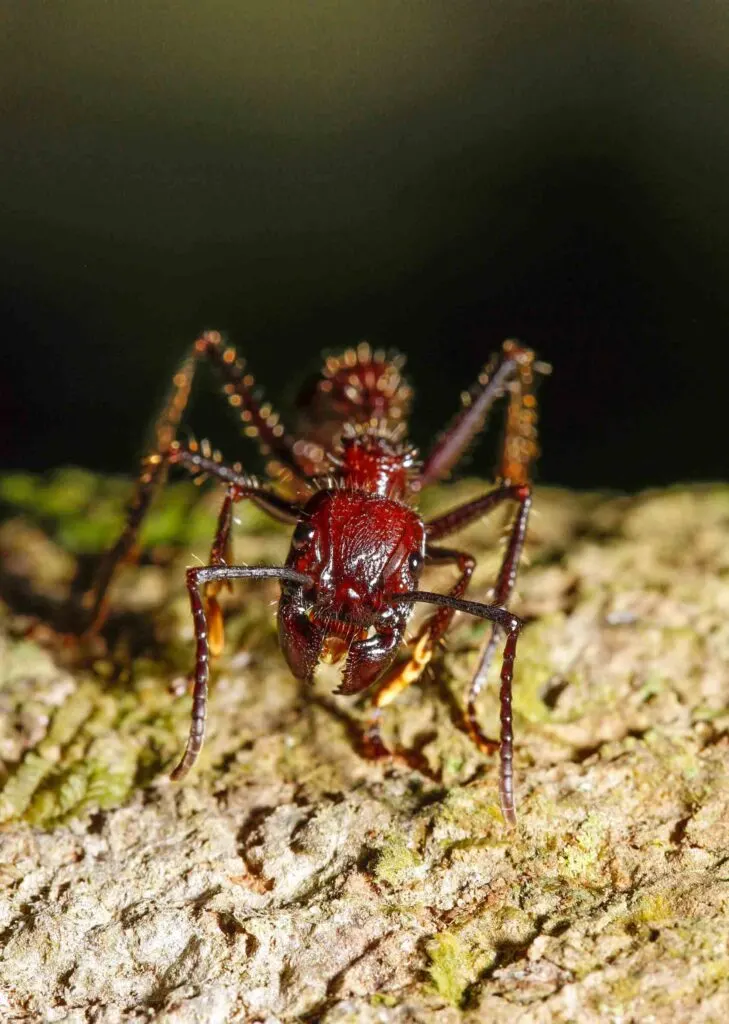
Although its name might sound otherwise, the bullet ant is not an aggressive insect. However, it is absolutely vicious when defending its nest.
This 0.7–1.2 inches (18–30 mm) long insect has a painful sting, reaching 4.0+, the highest Schmidt’s sting pain index.
Curiously, the Sateré-Mawé indigenous tribe in Brazil uses this ant in warrior’s initiation rites.
In short, the ants are woven into gloves, and young teens have to wear them for 5 to 10 long minutes. These sessions are repeated about 20 times over a period of weeks or years to complete the ritual.
Amazon facts: Ants make up 30% of the total animal biomass of the Amazon basin.
2. Bombus transversalis
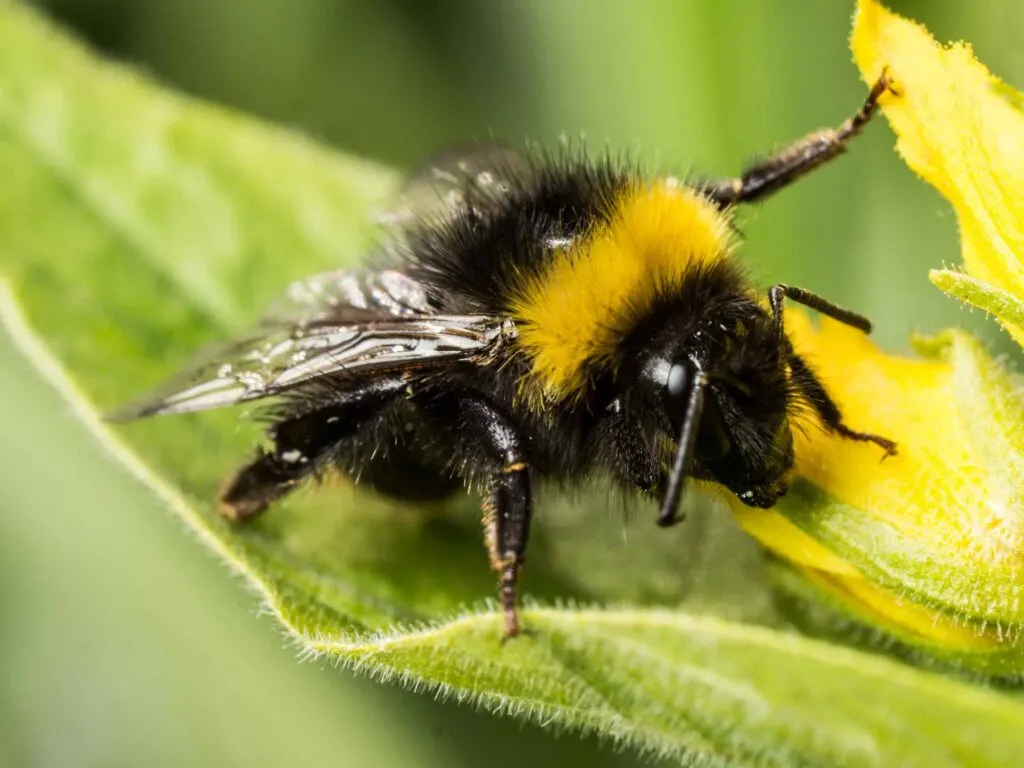
Bombus transversalis is a bumblebee specifically native to the Amazon Basin. It is most notable for its surface-level colonies, which are built by the workers on the rainforest floor.
This 0.8-1 inch (20-26 mm) long insect is one of the few bumblebees adapted to live in hot and wet tropics.
To forage food, it uses walking trails similar to those of ants, which is unique since most bees forage by flight.
It patrols the multiple trails extending out from the nest and collects materials and forage left by other bumblebees.
Amazon fact: The Amazon Rainforest is the world’s most biodiverse region.
3. Blue morpho butterfly (Morpho peleides)
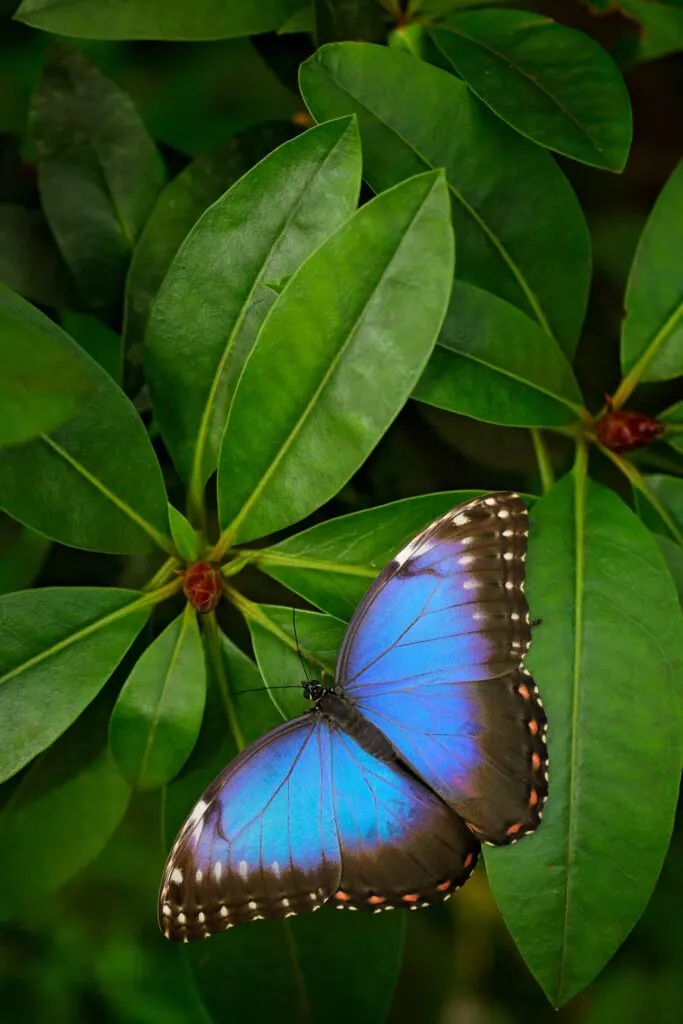
Among the world’s largest butterflies, the blue morpho’s wings span from 5 to 8 inches (12.5 to 20 cm).
Their vivid, iridescent blue coloring results from the microscopic scales on the backs of their wings, which reflect light.
The underside of the morpho’s wings, on the other hand, is a dull brown color with many eyespots, providing camouflage against predators such as birds and insects when its wings are closed.
When the blue morpho flies, the contrasting bright blue and dull brown colors flash, making it look like the morpho appears and disappears.
4. Orchid bee (Euglossini)
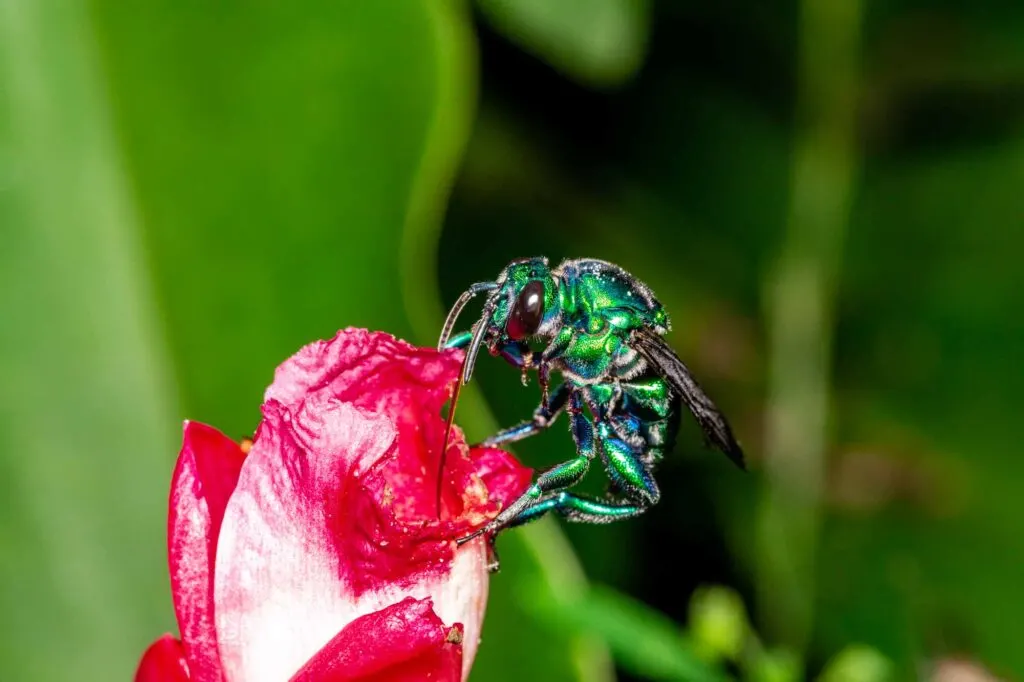
The 0.5-inch (13-mm) euglossini bees are characterized by a brilliant metallic coloration, mostly green, blue, and gold.
Male orchid bees have uniquely modified legs that are used to collect and store different volatile compounds throughout their lives, which are believed to be released at their display sites in the forest understory, where matings are known to take place.
This perfume-seeking behavior is also where orchid bees get their name. The males are especially easy to spot as they hover over plants searching for that perfect smell.
Orchids have some unique adaptations that exploit this behavior to ensure pollination. These orchids lure bees in with enticing scents of vanilla, cinnamon, and…rotting meat. Yuck!
5. Tetragonisca angustula
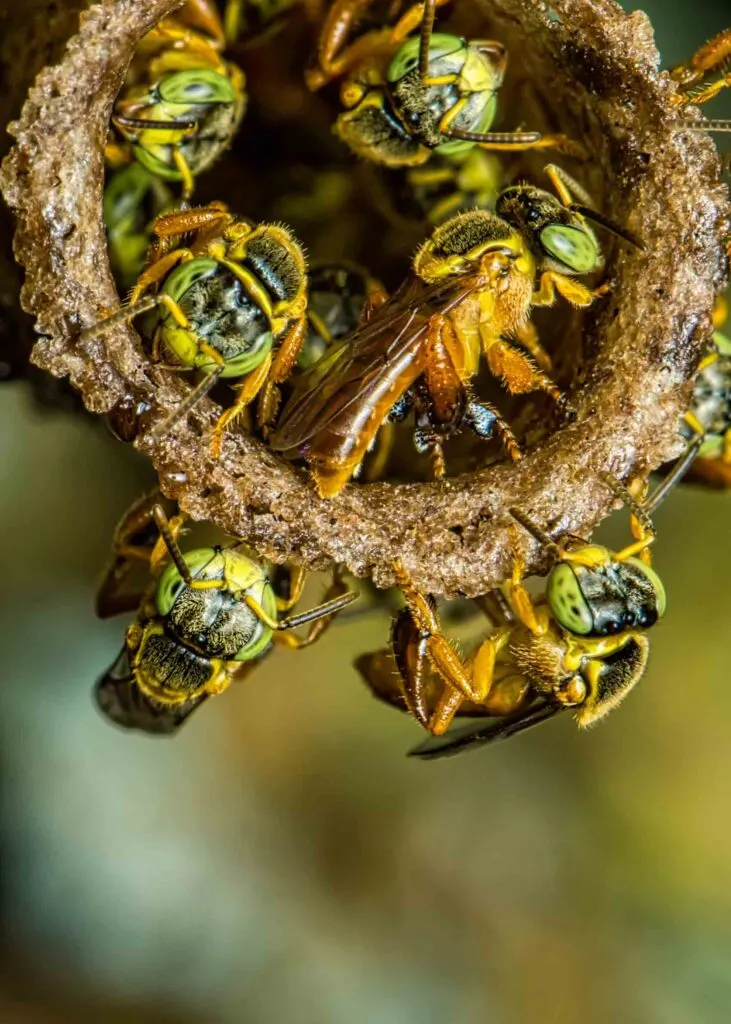
The stingless bee is one of those tiny Amazon Rainforest insects having a length of between 0.16-0.2 inches (4-5 mm).
It also has a smaller wing venation and bristles on its leg, and special caste soldier bees are slightly larger than their counterparts, the worker bees.
The Tetragonisca angustula behavior typically revolves around producing offspring and colonizing a new nest.
The stingless bee is also one of the widest spread species in the neotropics. It feeds on different plants and is renowned for pollinating 30 to 80% in its biomes.
6. Brazilian owl butterfly (Caligo)
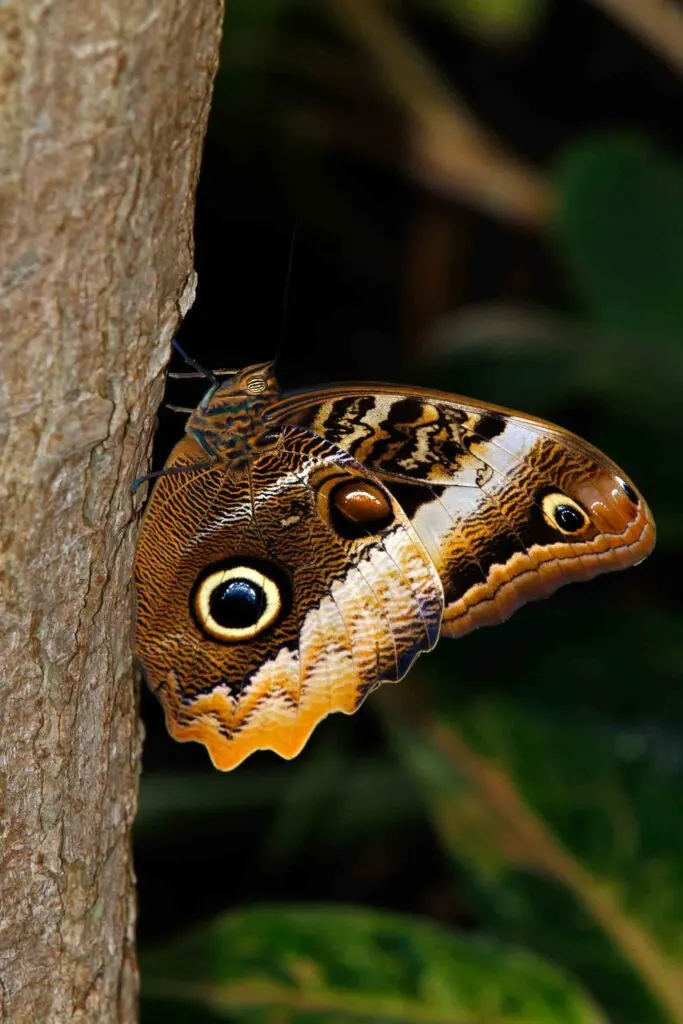
This specific butterfly is one of those insects in Brazil with a unique look, having enormous eyespots patterns on its wings that resemble an owl’s eye.
The Brazilian owl butterfly is considerable as it measures between 2.5 to 8 inches (65 to 200 mm) and is among the insects in the rainforest.
This butterfly is mostly active during dusk and will often fly a few meters at a time to prevent falling prey to avian predators. When it comes to mating, some of these butterfly species have a habit of forming leks.
Lastly, the Brazilian own enjoys feeding on fermenting fruits such as pineapple, mango, banana, and even large mammal dungs.
7. Army ant (Eciton burchellii)
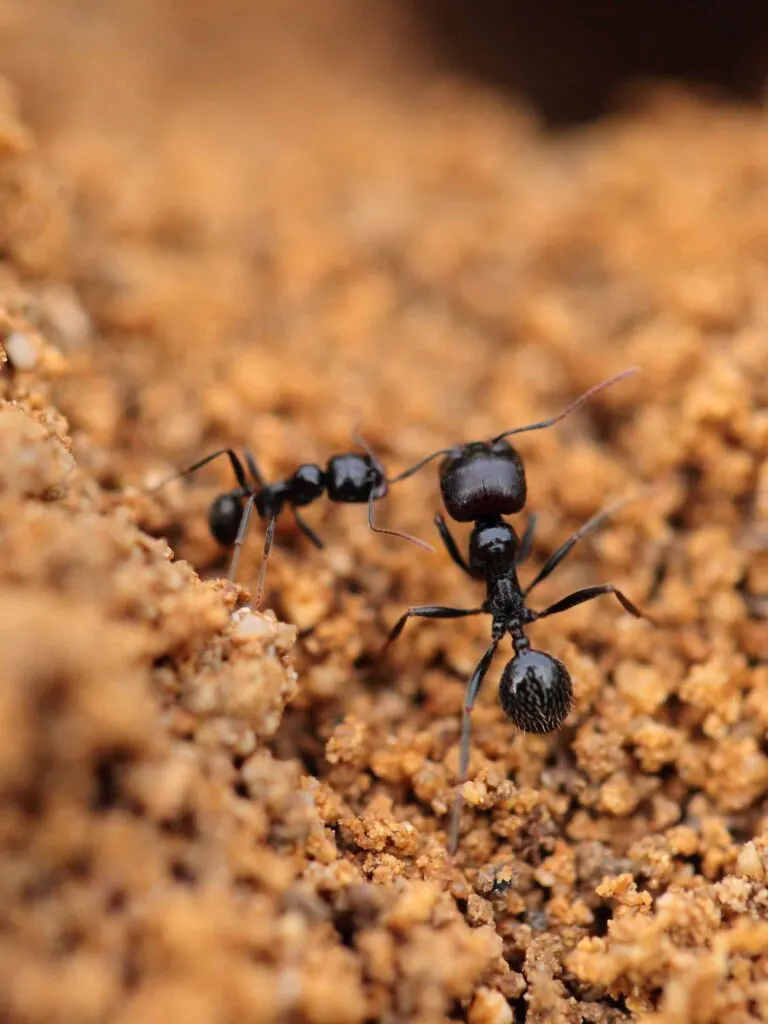
This ant species is among those Amazon Rainforest insects that are tiny in size. Its body is a black or dark brown color having an orange-colored abdomen.
Major army ants can measure up to 0.5 inches (~1 cm), while minor army ants measure up to 0.25 inches lengthwise. Their heads are pale orange, with dark orange legs, having a more extensive, darker mandible.
These particular Jungle insects have two phases of activity: the mobile and stationary phase cycles. The former phase begins ten days after eggs have been laid by the queen and will last around 15 days.
The army ant’s diet includes eating other ants, a wide variety of insects, lizards, frogs, and nesting birds.
8. Titan beetle (Titanus giganteus)
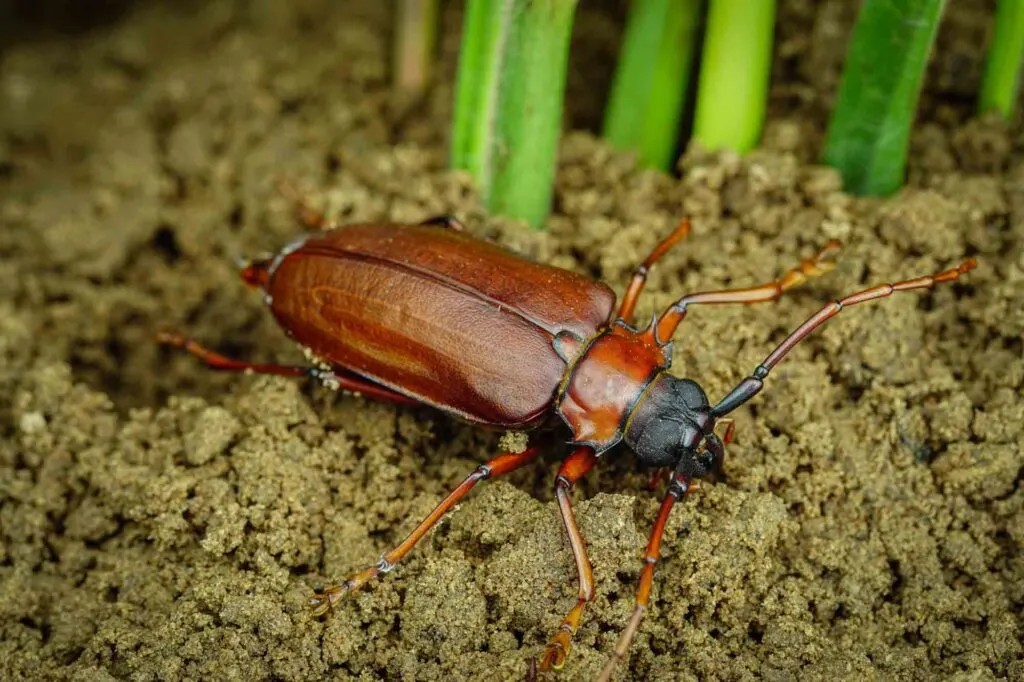
The titan is by far the largest beetle species measuring 6.5 inches (16.7 cm) in length. This particular beetle is not only one of the largest insects in the rain forest but also worldwide.
Titans will defend themselves against any predators that might want to cause harm by using both their sharp spine and strong jaws.
They usually hiss when provoked and will attack by biting. When it comes to mating, the adults will typically use sensing chemicals known as pheromones to locate their mates while in flight.
These Amazon insects feed on the inside of woods precisely when it’s decaying underground.
9. Leafcutter ant (Acromyrmex)
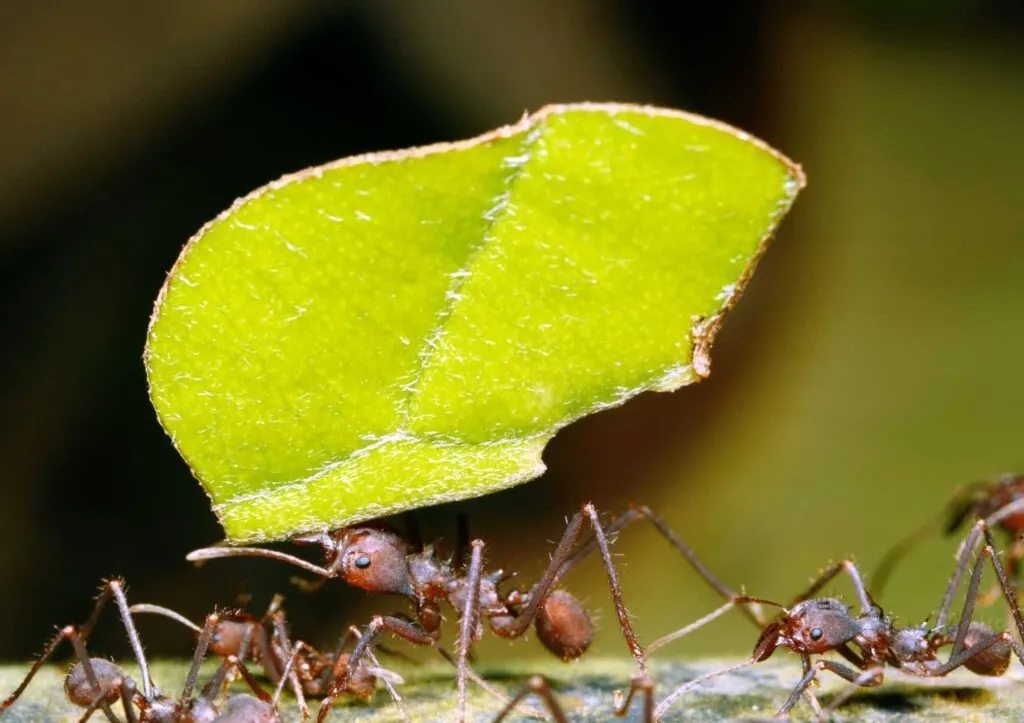
This tropical leaf chewing ant is among the smallest Amazon Rainforest insects and has a reddish-brown spiny body with long legs.
The largest leafcutter ant is the queen measuring between 1.2 to 1.6 inches (30 to 40 mm), the media worker is 0.4 inch (10 mm) long, and the smallest being the worker measuring 0.08 inch (2 mm) long.
The leafcutter ant is also referred to as the parasol ants because they carry leaves above their heads. This ant has four life cycle stages: the egg, larval, pupal, and adult.
Despite these ants being avid leafcutters, they don’t consume them. Instead, the ants carry the leaves back to their nest to help grow fungus which they usually consume.
10. Hercules beetle (Dynastes Hercules)
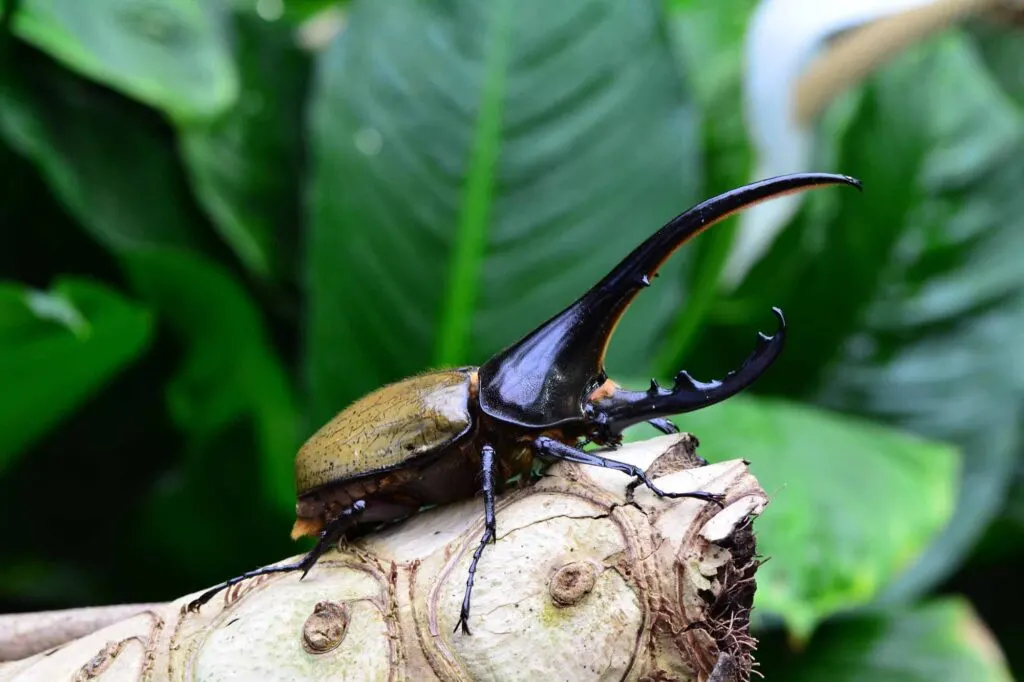
The Hercules beetle is one of those distinctive Amazon Rainforest insects. Males of this insect species have a large pair of horn-like pincers, having a black head with a black, brown, or green body covered in black spots.
The female Hercules beetle, on the other hand, usually has a brownish-black body.
Mating takes place during the rainy season, where males generally fight for female attention. Complete metamorphosis follows after mating, where the female lays up to 100 eggs in the ground.
Among the many insects in the Amazon Rainforest, this beetle’s main food during the larvae stage is usually rotting wood. On the other hand, adults will consume either fresh or rotting fruits such as apples, peaches, and pears.
11. Bush-cricket (Tettigoniidae)
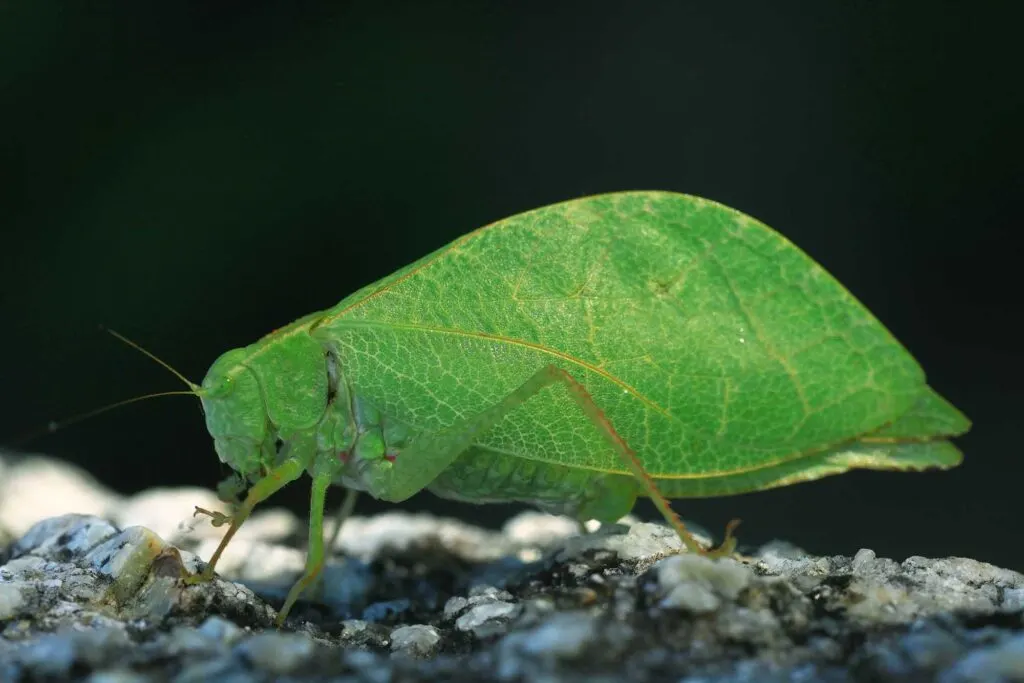
Katydids are among one of those Amazon Rainforest insects that has over 6,400 species.
This particular bushcricket has longer legs, long thread-like antennae, and an overall body size ranging between 0.4 to 2.4 inches (1 to 6 cm).
However, the matriarchal Katydid can grow up to 5 inches (12 cm) lengthwise.
These particular jungle insects have a relatively shorter life outside the tropical zone, with a majority living for about a year or less, unlike in the rain forest where they live slightly longer. Katydid’s diet involves mainly ingesting grass and leaves.
12. Brazilian cockroach (Blaberus giganteus)
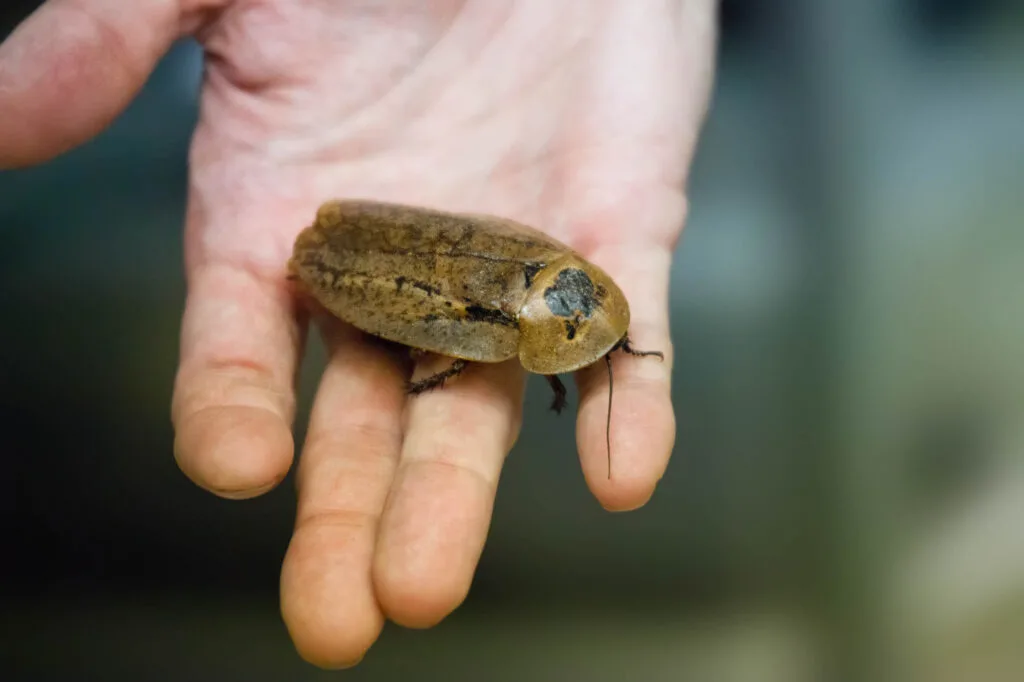
The Brazilian cockroach is considered one of the largest Amazon Rainforest insects, with a length of between 3 to 4 inches (7.5 to 10 cm).
Their bodies are usually flat and oval, with adults having two pairs of wings. The forewings are leathery, having a light brown color, while the hindwings are thin and expansive.
Its growth is generally rapid and involves three stages: the egg, nymph, and adult stage. Among insects in Brazil that are nocturnal, they usually come out to feed during the night.
Being an omnivore, precisely a scavenger, it typically feeds on decaying matter, dead insects, other animals, fruits, and excrement from birds and bats.
13. Elephant beetle (Megasoma elephas)
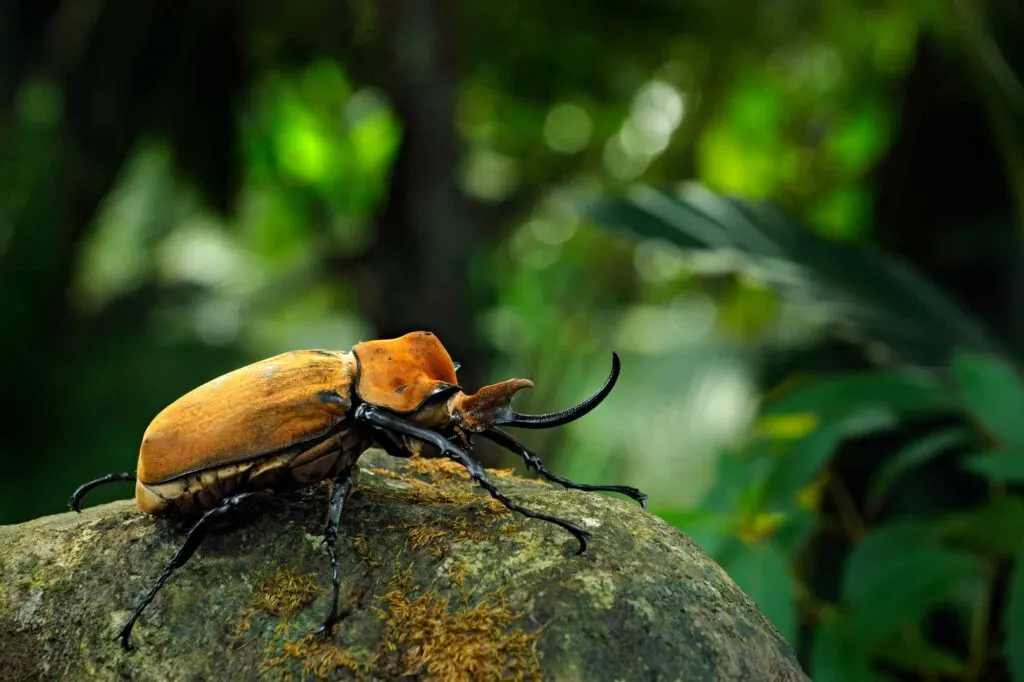
Elephant beetle males usually have two horns, one protruding from the head and the other from the prothorax. Generally, this beetle species comes in a black coat covered with fine microscopic hair, precisely thicker on its elytra.
As a result, the hair gives the Elephant beetle’s body a yellowish body color. This beetle is among one of those insects in the rainforest that’s active during the night.
It’s usually able to maintain high internal body temperature, especially during forage, while eating the sap from specific trees and ripened fallen fruits.
14. Blushing phantom butterfly (Cithaerias pireta aurorina)
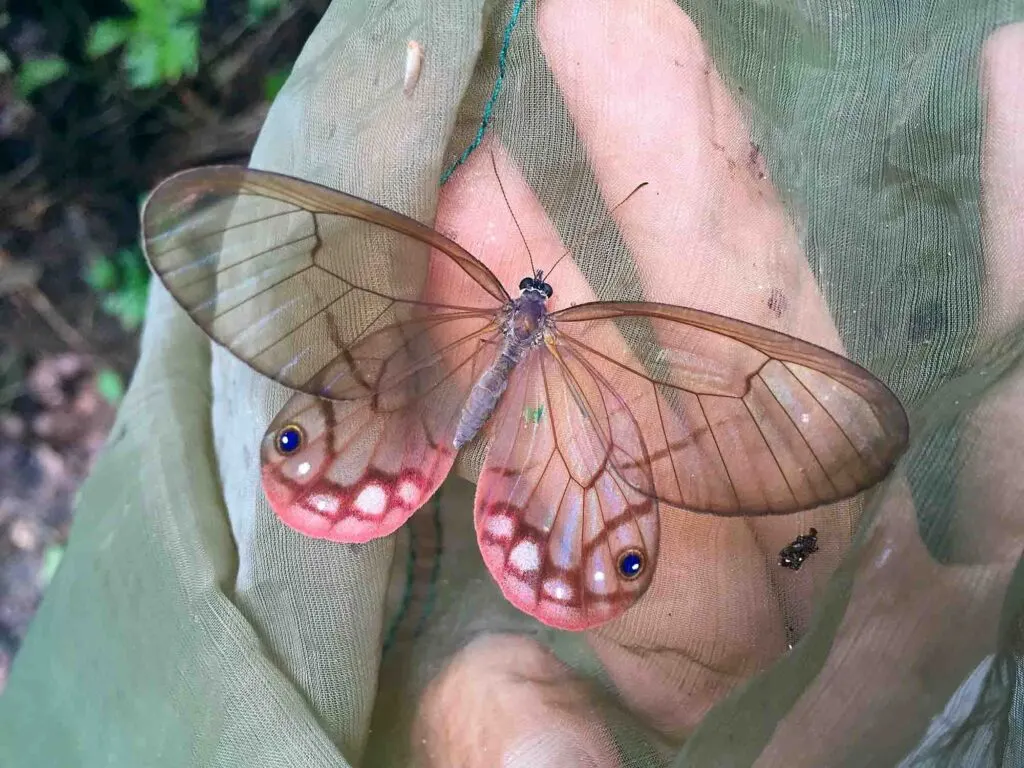
Among one of the most beautiful Amazon Rainforest insects, its colors are produced through its wing scales and at times through light refraction in the prism-like ridges on the surface scale.
Other Cathaerias pieta Aurorina is thin scaled or lacks wing scales entirely hence revealing their transparent membrane.
The blushing phantom butterfly is crepuscular and will mostly come out at dusk than any other time. This species of butterfly flight is low near the ground, with its wing beat deeper and slower too.
The blushing phantom butterfly mainly feeds on rotting palm fruits on the forest floor or fluids from decomposing fungi.
Learn more about the Amazon Rainforest animals
To deepen your understanding of the wide range of animals in the Amazon Rainforest, you might want to browse my other articles where I talk about the monkeys, birds, snakes, spiders, and other mammals that live in this tropical forest.
But, if you want to learn more about other animals in Brazil, not only in the rainforest, you might want to check this guide I just linked above.
Did you like this post about the Amazon Rainforest insects? Then send it to a friend who would like it too!
